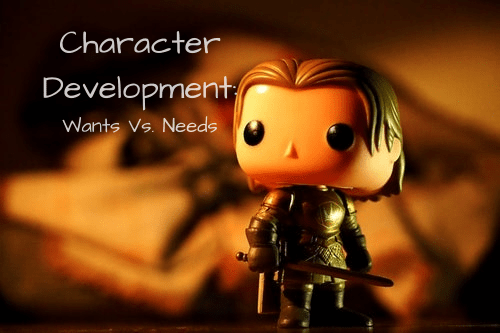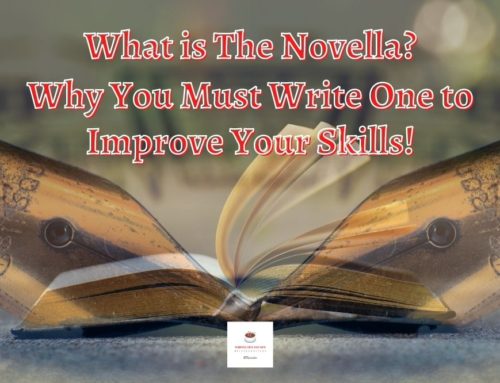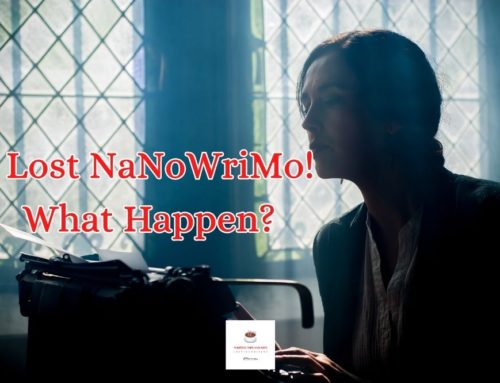What is strong character development? Learn how characters need clearly defined wants that are motivated by their underlying needs. And, understanding their Arc is paced throughout the story and ends with them finding their need.
Want vs. Need:
Every single person on this earth has one thing in common; we all have desires and yearnings that drive us to live our lives in a certain way. Characters, too, need to have something they yearn for, things that push them to act.
In storytelling, this often comes out as their wants and their needs. Wants are external, known, and unique to the character. Naruto wants to become Hokage, Harry Potter wants to save the school from snape, and Ezio wants to avenge his family. These are all external desires that drive the plot, but they are not the whole story and often leave out the reason why these characters not only desire success but yearn for it.

Yearnings lie in the needs of a character. Needs are internal, often unknown, and drive at the universal theme of the story – they come from the heart.
Looking closer at Naruto, past his want, we see a need for acceptance. He yearns for his village to view him with respect, and believes that the only way to get that acknowledgment is by becoming the best ninja in the village.
He trains, putting in his best effort, trying to get acknowledgment from his classmates, his teachers, and his rival: Sasuke.
Every decision he makes is in the hope that someone would see him as worthy. It is not until he becomes the hero of the fourth great ninja war that he finally fully feels accepted by everyone he has encountered.
We connect with him because of his yearning for acceptance, this universal theme that most people suffer from all their lives, and seeing it represented gives readers hope that they, too, will find their acceptance.
Character Development: Creating a Strong Character:
Something many other writers and I struggle with is building strong characters who drive the plot. It is easy getting lost writing a story where the plot drives the narrative and not the protagonist. Things keep happening to the main character, and they go with the flow. But, to grow an attachment too, and learn about a character, their actions need to drive the narrative.
We, as writers, must ask the questions:
What is a strong character?
Are they dynamic or falling FLAT on their face?
What are their wants and needs? Their goals? What motivates MY character?
Often, our attachment to characters blind us to why readers are not connecting to them. The most common reasons lie in their wants vs. their needs and the underlying motivation that drives their goals.
For example, look at Ezio Auditore de Firenze from Assassin’s Creed II, He is a character with a stubborn, charismatic, and loyal personality, who continually makes decisions that shape his narrative (killing Uberto, relocating his family, rejecting his uncle’s wisdom). His primary motivation, his want, is revenge on the people who killed his family. But he doesn’t know that he needs closure.
You can also look at Naruto Uzumaki from the anime Naruto; he is a stubborn, good-natured (how to say this nicely) idiot. Throughout the entire manga and anime, he stays true to these characteristics, and his decisions – often bad ones – drive the plot.
His primary want and goal is to become the Hokage, and throughout the series, he grows and evolves, trying to reach this – trying to find his family in his village. His need, his motivation driving his want, is a need to be accepted by the people around him.
Character Goals:

One of the best ways to know if you have a strong character or not is if they are more proactive than reactive.
A proactive character is continually making decisions to reach their goals. Their choices may not always be effective, and for an exciting story, they probably make matters worse, but the character is doing something.
If a character lacks goals or motivations, it becomes difficult to connect with said character. They become a reactive character – allowing the plot to take them. Outside forces and other characters move the plot, and the reactive character is a lens to see the story through – a point of awareness for the reader.
Most often, a character’s goals get lost within the overarching goals of a group of characters. Let’s look at Harry Potter and the Sorcerer’s Stone. This novel follows a group, well trio of characters who share the goal of protecting the school from Snape (Well Voldemort, but they blame Snape throughout the book: so Snape!)
It would be easy to lose track of Harry Potter in this kind of story if, he too, didn’t have his own goals as well. He wants to know about his family, the wizarding world, where he came from, and he wants to protect the school from Snape.
We see the school through the same curiosity as Harry, which adds another layer of connection with him. If the story did not focus on his need for friends and family, he would not stick out in the trio of friends and would come off as just a name.
Character Arc:
Often, if a character isn’t driving the narrative, or connecting with readers, the problem lies within their character arc.
You might be wondering, “Well, Mr. C. D. Baron, what is a good character arc?”
I’m glad you asked, it is the transformation of your character throughout the story, often instigated by the inciting moment. It introduces a problem that the protagonist needs to solve, whether they are aware of it or not.
Usually, the problem is an internal need unknown to the protagonist, but their wants and motivations lead them to that need. The arc must span throughout the three acts of the story.
Act 1 simply introduces the problem. For example, in the first Act of Assassin’s Creed II, we meet Ezio, his family, and his way of life until we see that all robbed from him. His family is framed and murdered in a conspiracy much bigger than Ezio. The problem is introduced, and Ezio’s motivation is clear: he wants revenge.
In Act II of Ezio’s story, we seem him meet a bunch of side characters that help and guide him toward his goal of revenge, but he doesn’t listen to everything they say because his family comes first and foremost.
Revenge blinds Ezio of his need. Act II is the bulk of the story and consists of trying to solve the problem in whatever way the character can come up with, but ultimately failing in the process because they don’t have all the tools/knowledge available to them, yet.
Act III: Ezio learns everything he needs to finally go after the man responsible for the death of his family. He learned to trust those around him and became a leader within the Assassin’s order. When the moment comes to kill the man responsible, he spares him.
His want for revenge is not as important as the lives of those around him; he knows killing the pope will cause more problems and essentially forgives Rodrigo giving himself the closure Ezio needs. In this act, the character has gone through their full transformation; they know and have their need and are finally able to solve their problem and do.
Conclusion:
In order to write strong characters, they need to have clearly defined wants that are motivated by their underlying needs.
The character’s arc has either a constant goal or goals throughout that help the protagonist learn their underlying need and change to solve their problem.
A character should have a yearning for success and be proactive in achieving their goals. Everything together makes the basis for a strong character that readers will relate too.
If you find this information useful feel free to subscribe and share it with your friends.
C. D. Baron
Latest posts by C. D. Baron (see all)
- What is The Novella? Why You Must Write One to Improve Your Skills! - 03/21/2021
- Wake Up! A Short Story (Work in Progress) - 02/07/2021
- My Top 5 Favorite Reads of All Time (So Far) - 01/24/2021





